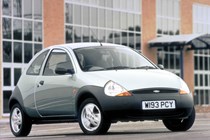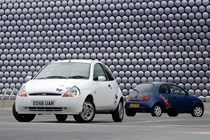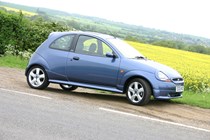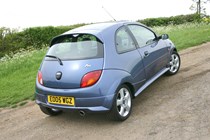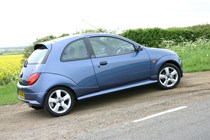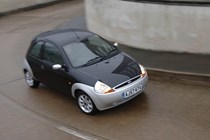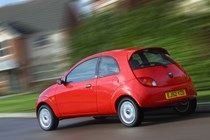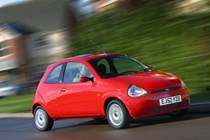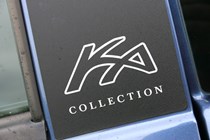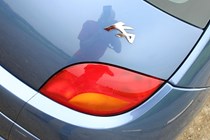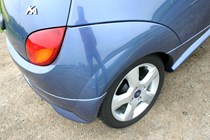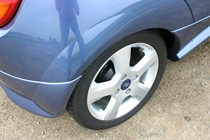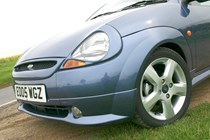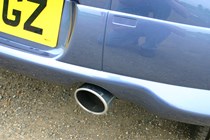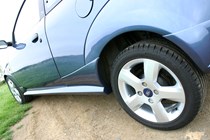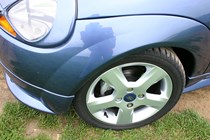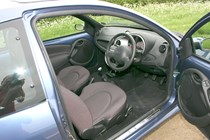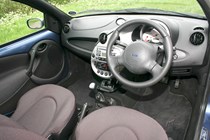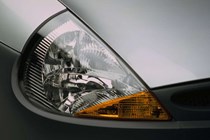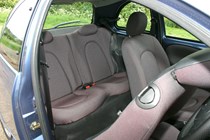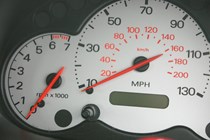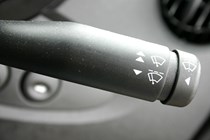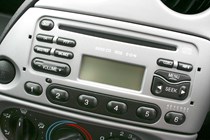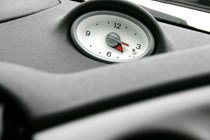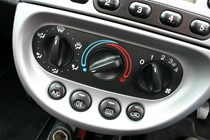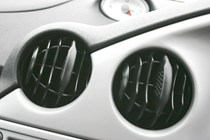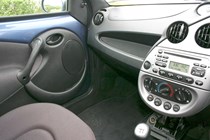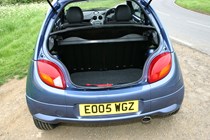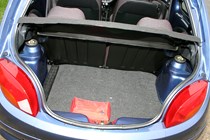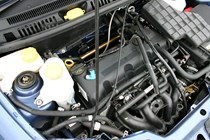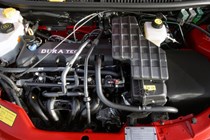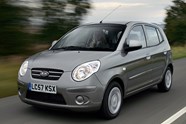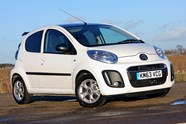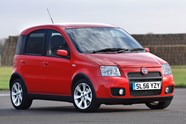Ford Ka Hatchback (1996-2008) review
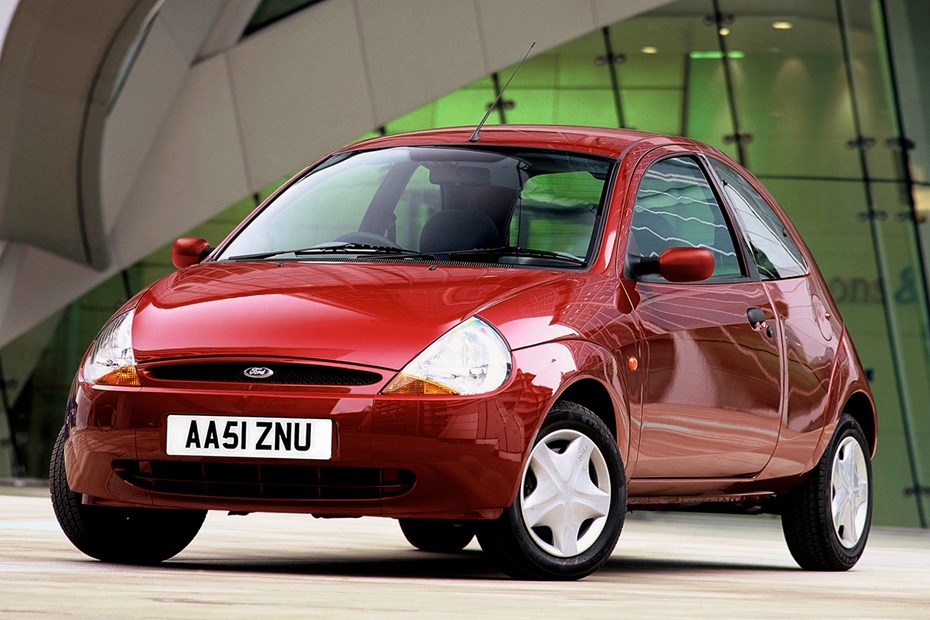
At a glance
| Price new | £6,375 - £10,470 |
|---|---|
| Used prices | £315 - £1,281 |
| Road tax cost | £215 - £395 |
| Insurance group | 10 - 16 |
Get an insurance quote with

|
|
| Fuel economy | Not tested to latest standards |
| Range | 326 - 414 miles |
| Number of doors | 3 |
| View full specs for a specific version | |
Available fuel types
Petrol
Pros & cons
- Still looks distinctive
- Cheap to run
- Nimble around town, fun to drive
- Limited rear space
- Dated, basic interior
- Lacks refinement, noisy on motorways
Ford Ka (96-08) rivals
Overview
The Ford Ka turned heads when launched in 1996, not for the technology, but for the striking styling that wrapped up a fairly basic car. As the first example of Ford’s ‘New Edge’ design to reach production after the GT90 concept put it in the hands of gamers, it was fashion first, and within reach of the youngest buyers.
It’s hard to believe now, but the Ka beat the Smart to market as a cute, robustly plastic-edged city car, and it beat it on price while offering a more useful package of space and mechanical familiarity. Based on the Ford Fiesta Mk3-5, it allowed the Fiesta to grow bigger and more expensive to compete with rivals. At the same time, it gave Ford a much-needed vibrant new brand to play with just as MINI was about to be reinvented.
Its closest rivals are the Kia Picanto, Volkswagen Lupo and the VW’s twin, the SEAT Arosa, but your used budget may also stretch to an early MINI or VW New Beetle if you want a cheap first car with personality.
The original Ka sold in huge numbers in the UK and Europe, and every established mechanic you encounter is going to have seen one. Although Ford only offered one engine in the Ka range, that engine changed in 2002, and the fun SportKa and open-topped StreetKa add further choice. Mechanically dated when new, it was very crude by 2008 when the Ford Ka Mk2 was announced. But it’s still a great used buy if you can find a good one – and here’s how.
Ford Ka Mk1 known problems and buying tips
Buying a Ford Ka Mk1 now that it’s over 15 years since the last new ones were sold means choosing from a small pool of survivors. You’ll find the best and most expensive examples in our cars for sale, as those have remained with dealers, but there are thousands on Gumtree, Facebook and eBay marketplaces. You’ve little comeback with a private seller, so check any prospective purchase out thoroughly.
As a first car the Ka has the potential to be a good and educational experience. Easy to learn basic and more advanced mechanical maintenance on, it has few complex systems and is easy to understand with lots of knowledge and experience on forums and through clubs. As a design classic, it is assured a place in Ford’s history at car shows, though only the best will increase in value. The SportKa is worth seeking out for this reason, but it’s already rare.
1. Rust is the enemy – where to check a Ford Ka
When Ford based the Ka on the Mk3 Fiesta, it borrowed the suspension, floor and engine. Unfortunately it also borrowed the rustproofing, and a Ford Ka Mk1 can rust everywhere. There’s not much wasted bodywork either, so once it takes hold, it’s serious. Before viewing any Ford Ka check the MoT history online and note where corrosion is mentioned as a fail or advisory.
First place to look is along the sills, underneath – patches are acceptable, but beware large quantities of black underseal. The next weak spot is inside the rear arches, where many cars show bubbling and rust under the fuel filler. Those bubbles come through from behind, so if you can see them then it’s worse, not better, under the paint.
Behind the bumper and plastic arches the Ka can rot away happily without the owner realising until the boot fills with water, so if the car smells damp, check the boot carpet and along the seams. Finally, the front rusts too, along the bulkhead and inner wings. Higher spec and SportKa models with painted bumpers do not use the same mouldings as the basic, unfinished plastic type; if they’re textured, the wrong part has been fitted as a replacement.
At this age, if you find a rust-free example, it’s worth preserving. The SportKa is already collectible.
2. Ford Ka Mk1 engine – 1.3 petrol
Endura-E, pre-2002: the original launch engine for the Ka, used until 2002, is the 60hp Ford Endura-E. It’s what makes the Ka so good for budding mechanics, as the basic unit dates back to the 1960s and it’s an overhead valve design that looks like every cutaway of ‘how an engine works’ in kids’ books. It’s also what makes the Ka so noisy and rattly if not looked after; it’s pretty rattly even when adjusted well.
It can suffer head gasket failure, valve stem seals and general wear like any car, but everything is basic to fix. Watch out for cars with high oil consumption as it’ll wreck the catalytic convertor.
An old, but useful trick is to undo the oil filler cap with the car idling. If it pops off, or is blown about, the engine is getting worn, but if there is just a little pressure it could merely need a few cheap components replacing in the ‘PCV’ system – they’re often overlooked. Don’t forget to put the oil cap on properly before driving.
Duratec 8V, 2002-2008: to conform with tighter emissions standards the Ka changed to a more modern, 70hp OHC 1.3-litre petrol engine. It’s still crude, and the Ka is relatively high to tax as a consequence. It’s a tough little unit, and most issues other than ‘just wearing out’ are down to ignition, coils, leads and plugs. It can sound coarse as it uses a timing chain, rather than belt; excessive rattle is a sign for concern here.
3. Ford SportKa and StreetKa engine – 1.6 petrol
The SportKa, introduced in 2002, uses the 95hp 1.6-litre version of the Duratec 8V (RoCam). Designed for the Brazilian market where many cars get unique variations, it’s a torquey, robust engine that gives the little Ka a proper hot-hatch attitude and is very easy to tune for more power. Like the 1.3 Duratec, most problems stem from the ignition system and age/neglect, so the usual checks for coolant and oil condition and excessive noise or poor running should be sufficient.
The StreetKa uses the same engine, but is covered in a separate review.
4. Ford Ka suspension, brakes and handling
It’s a basic car, based on relatively old technology. The Ford Ka Mk1 isn’t particularly strong, though it’s competitive for 1996 standards, and it lacks advanced stability control or even ABS as standard (ABS is available on the highest-spec, and standard on all models from 2004-on). Front suspension can knock from worn bushes, and it’ll wander a bit too if really neglected (check the tyre wear) but it’s cheap to fix, rear suspension beams can rust – but if they’re bad, usually the Ka they’re attached to will be worse. Check that the pedal isn’t spongy and the brakes don’t pull to either side, and if ABS is fitted, make sure the light comes on, and goes out, when the car is started.
5. Ford Ka Mk 1 technology and gadgets
Yes, there are gadgets on a Ford Ka! First, make sure it has the right keys, as they have immobilisers and alarms varying across spec and age. Choose an upmarket trim such as Luxury or Collection, and you will find a CD player, and all but the basic Ka have electric windows and central locking.
Climate editions include air conditioning – which is new enough that it should be easy to re-gas once the seals and compressor are known to be good – and Ford’s excellent Quickclear windscreen. Test that on a misty day without using the car’s heater to see how many stripes form; it’s unlikely that a Ka will have a fully-working screen at this age.
The Ka has a driver’s airbag as standard. Passenger airbags are optional.
Can I get a Ford Ka automatic?
No. All Ford Ka Mk1s have a five-speed manual gearbox, and if they were automatics they’d have the awful CVT from the Mk3 Fiesta, so consider it a blessing. If you want a small automatic similar in size and cuteness to a Ford Ka the original Smart City Coupe might do the trick, or an early Mercedes-Benz A-Class if you need four seats. We’d recommend looking for a Toyota Yaris Mk2 automatic for sale before considering the others.
Is a Ford Ka Mk1 suitable for modern traffic?
Arguably, the push towards lower speed limits and lower average speed limits means it’s more suitable. However, neither 1.3 engine is particularly economical or clean, and the gearing makes the pre-2002 model loud and tiresome on the motorway. It’s a small car that fits into spaces and doesn’t dominate city streets, but it’s surrounded by big, heavy modern alternatives, where drivers are increasingly reliant on technology to brake and steer for them if they don’t spot you.
If you’re not committed to the idea of enjoying an older-car experience, or in love with the shape and character of the Ka, there are better options for price of a good Mk1, starting with the Ka Mk2 and its sibling, the Fiat 500.
Want to know how the Ka compared when it was new. Click the next section links to read our original review, and our verdict on whether you should buy a used Ka now.



